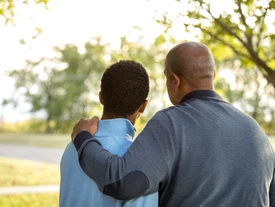Will more than one child be coming down the stairs to see what is under your tree on Christmas morning? The number of gifts does not need to be exactly the same for each sibling, but the amount should appear to be the same—or parents are sure to hear cries of “Not fair!”
Demands for an equal number of presents are childish. Some gifts are larger than others, still others cost more or were harder to find. Insistence on receiving the exact same number of gifts as a sibling discounts the value (in thoughtfulness or worth) of each present. This creates an “equity” trap.
Much the same is true in schools today. Modern-day social justice warriors have made equity—equal outcomes—a staple of their agenda. Diversity, equity, and inclusion (DEI) offices are common in schools around the country, with the term “equity” finding its way into mission statements and board resolutions. Vice President Kamala Harris took to social media in 2020 to extoll the concept, explaining that it means “we all end up in the same place.” Critical race theorist Ibram X. Kendi says equity is so important that we can even use racial discrimination to force equal outcomes. Increasingly, school district officials are adding “equitable outcomes” as a goal for their districts.
This perspective is dangerous. If we make an exception for racial discrimination when it creates equal outcomes, do we get to choose the person who decides when this is appropriate or is it forced on us? What if the results for everyone could have been better without the racial bias that forced everyone to have the same outcomes?
In education, the pursuit of equal outcomes often leads to the soft bigotry of low expectations. Instead, high achievement should be the goal.
Shortly after Thanksgiving, I spoke with school board member and American Enterprise Institute Senior Fellow Ian Rowe before an audience of charter school leaders at the South Carolina Public Charter School District.
Ian explained that, in some states, even if we closed the education achievement gap between students from different races and backgrounds, it should not count as success. That’s because, in states like Rhode Island and Kentucky, all students in certain grades and subjects are low performing. Attaining equity for students would merely bring ethnic minority students from a level that is low performing to a level that is still mediocre because their peers are not faring much better.
This is the case nationally and in South Carolina. The national average for black students on an 8th grade math comparison is more than 20 points below the national average—but the national average has dropped eight points since 2019. Even if black students caught up, they would still be behind where students were scoring three years ago. Among 8th grade South Carolinians, black students score 14 points behind the state average in reading—yet the state average is still five points below the national average, and the national average has dropped eight points since 2013.
Even if the black 8th graders in South Carolina were scoring at the proficiency level in math as white students (32 percent), it would still leave two out of every three black and white students scoring below grade level.
In truth, and according to the Truth, the only thing everyone shares equitably is sin—all have sinned and fall short of the glory of God. We must pray that God’s grace would be sufficient to meet our needs each day. While God’s grace is complete for all who believe, we still bring Him our unique petitions and ask for specific help in times of trouble. God has an eternal plan, and He does not answer our prayers equitably but uniquely according to His wisdom.
This Christmas, do not fall into the equity trap around the Christmas tree or when “antiracists” claim equity is what K-12 students need. God works for our good according to our needs and His Plan—students need parents, guardians and teachers working for his or her best interests, according to their needs. That is a gift every child will want to open.
Author: Jonathan Butcher






